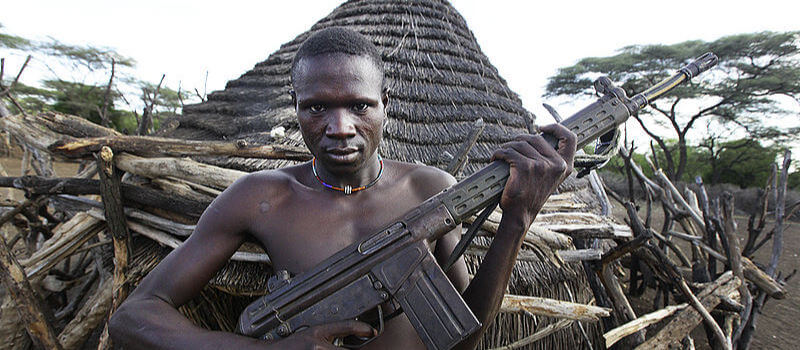The Future of Conflict: South Sudan
June 18, 2019 | Expert Insights

BACKGROUND
The political struggle between President Salva Kiir (Dinka tribe) and former vice-President Riek Machar (Nuer tribe) is at the root of the civil conflict that began in 2013. After four years of belligerence, Machar agreed to return to the capital of Juba to cement a fluid peace agreement, signed in August 2015, which included his opposition group’s participation in the government of national unity. The deal was subsequently broken in July 2016, after five days of fierce combat between the two military factions. Opposition troops under Machar were defeated due to the imbalance of forces and the superiority of weapons used by the government.
An estimated figure of over 400,000 lives have been lost in the conflict. Despite a 2018 peace agreement between Kiir and Machar inspiring hope for a lasting peace treaty, a lot still remains to be done, assuming that the agreement is adhered to in the first place.
ANALYSIS
Some political analysts consider South Sudan to be a country hostage to the ‘gun class’, i.e., an elite group of men, referring to Kiir and Machar here, who are using violence channelled through appeals in favour of ethnic nationalism, diverting resources and finances to their personal advantage.
Although the conflict was initially being fought between the Dinka and Nuer tribes, a number of South Sudan’s 64 different ethnic groups joined the conflict. Some of them did so by joining on either of the two sides and others entirely on their own. The conflict thus extended beyond the two belligerent groups and had separate rebel ethnic groups join the fight.
The reason that the strife metamorphosed from a political crisis to a full-blown civil war was not entirely due to ethnic divisions, but more that the army was neither professionalised nor institutionalised. Rather, it was a collection of militias, each of which was built on the basis of personal loyalty to its commander. In effect, they were nothing more than ethnically-based armed units. Thus, when ethnically-based grievances were not redressed, people fled to their kinsmen for security when the fighting broke out.
Added to this, there prevails a total lack of accountability, epitomised by the rapes of and violence against aid workers and civilians alike in 2016 by soldiers at a hotel in Juba.
ASSESSMENT
Our assessment is that unless the two politicians genuinely take it upon themselves to resolve the conflict, the situation is likely to escalate further. At the moment, the prevailing uncertainty in South Sudan has caused it to overtake Syria and Yemen as the fastest-growing humanitarian crisis in the world.
To de-escalate, we believe that regional instability and disunity must be dealt with first. East Africa is an extremely volatile region since political instability in any region will impact neighbouring states, as they are likely to be overwhelmed with refugees. Moreover, more than a third of South Sudan’s population is internally displaced, a potential security risk, that these people are often targeted for recruitment by rebels and even terrorists.
The way the South Sudanese tribes presented a united front in their war for independence, although inspiring, has never been seen since. We believe that rediscovering this unity must be a top priority. Unless the two SPLMs (Sudan People’s Liberation Movements) find common ground, Sudan will continue on its current trajectory towards becoming the next Rwanda or Syria in terms of the utter devastation seen there.
Finally, the violations of the ceasefire in the past is worrying and must be nipped in the bud if South Sudan, the African Union and the world are truly committed to a sustainable peace process.








Comments